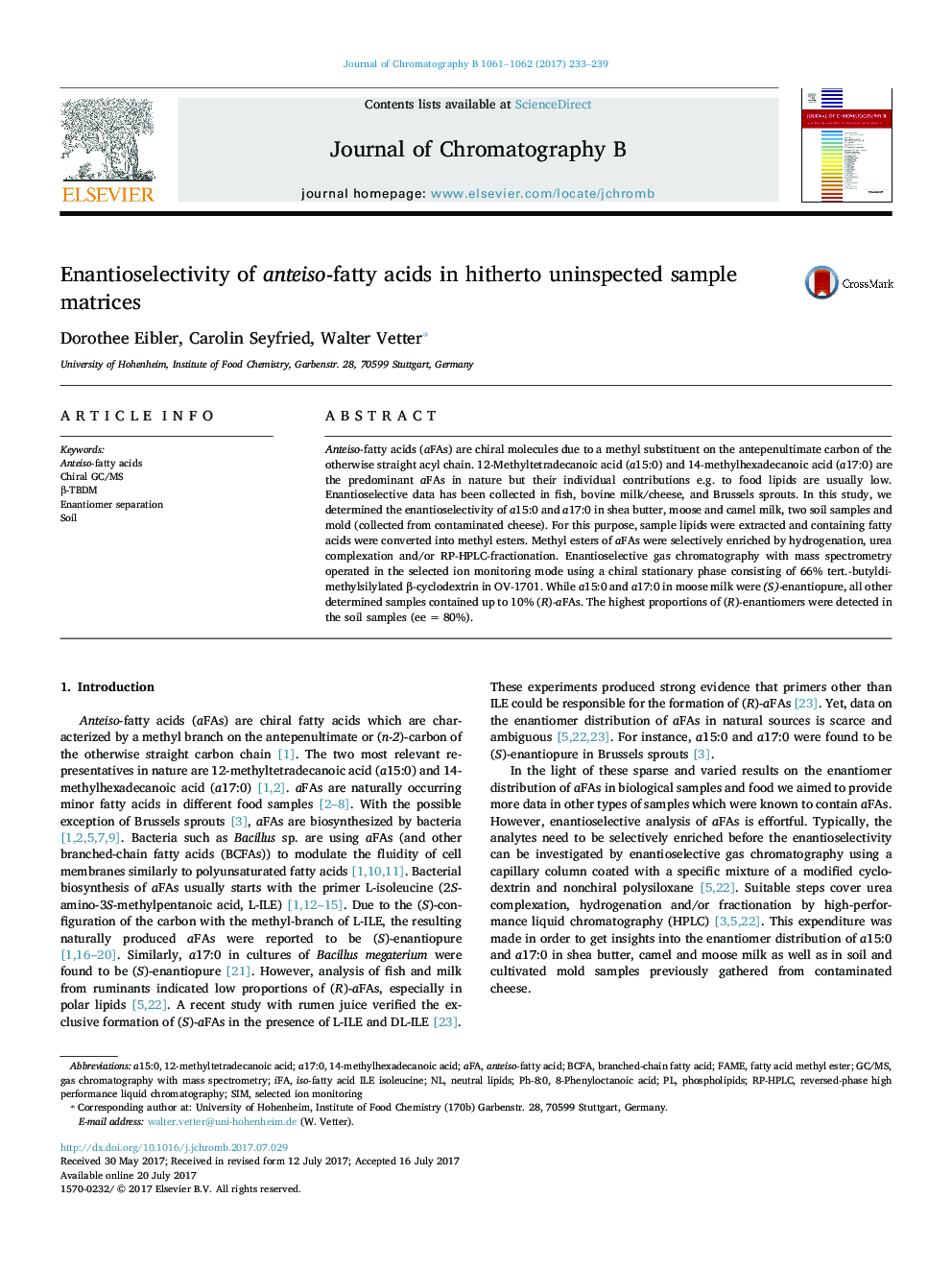| کد مقاله | کد نشریه | سال انتشار | مقاله انگلیسی | نسخه تمام متن |
|---|---|---|---|---|
| 5136175 | 1494002 | 2017 | 7 صفحه PDF | دانلود رایگان |

- Enantioselectivity of anteiso-fatty acids (aFA) was studied in different lipids.
- Hydrogenation, urea complexation and HPLC was used for aFA enrichment.
- Enantioselective analyses were performed with GC/MS using a β-TBDM column.
- a15:0 and a17:0 in moose milk were (S)-enantiopure.
- Other samples (soil, shea butter, camel milk, mold) contained up to 10% (R)-aFAs.
Anteiso-fatty acids (aFAs) are chiral molecules due to a methyl substituent on the antepenultimate carbon of the otherwise straight acyl chain. 12-Methyltetradecanoic acid (a15:0) and 14-methylhexadecanoic acid (a17:0) are the predominant aFAs in nature but their individual contributions e.g. to food lipids are usually low. Enantioselective data has been collected in fish, bovine milk/cheese, and Brussels sprouts. In this study, we determined the enantioselectivity of a15:0 and a17:0 in shea butter, moose and camel milk, two soil samples and mold (collected from contaminated cheese). For this purpose, sample lipids were extracted and containing fatty acids were converted into methyl esters. Methyl esters of aFAs were selectively enriched by hydrogenation, urea complexation and/or RP-HPLC-fractionation. Enantioselective gas chromatography with mass spectrometry operated in the selected ion monitoring mode using a chiral stationary phase consisting of 66% tert.-butyldimethylsilylated β-cyclodextrin in OV-1701. While a15:0 and a17:0 in moose milk were (S)-enantiopure, all other determined samples contained up to 10% (R)-aFAs. The highest proportions of (R)-enantiomers were detected in the soil samples (ee = 80%).
Journal: Journal of Chromatography B - Volumes 1061â1062, 1 September 2017, Pages 233-239